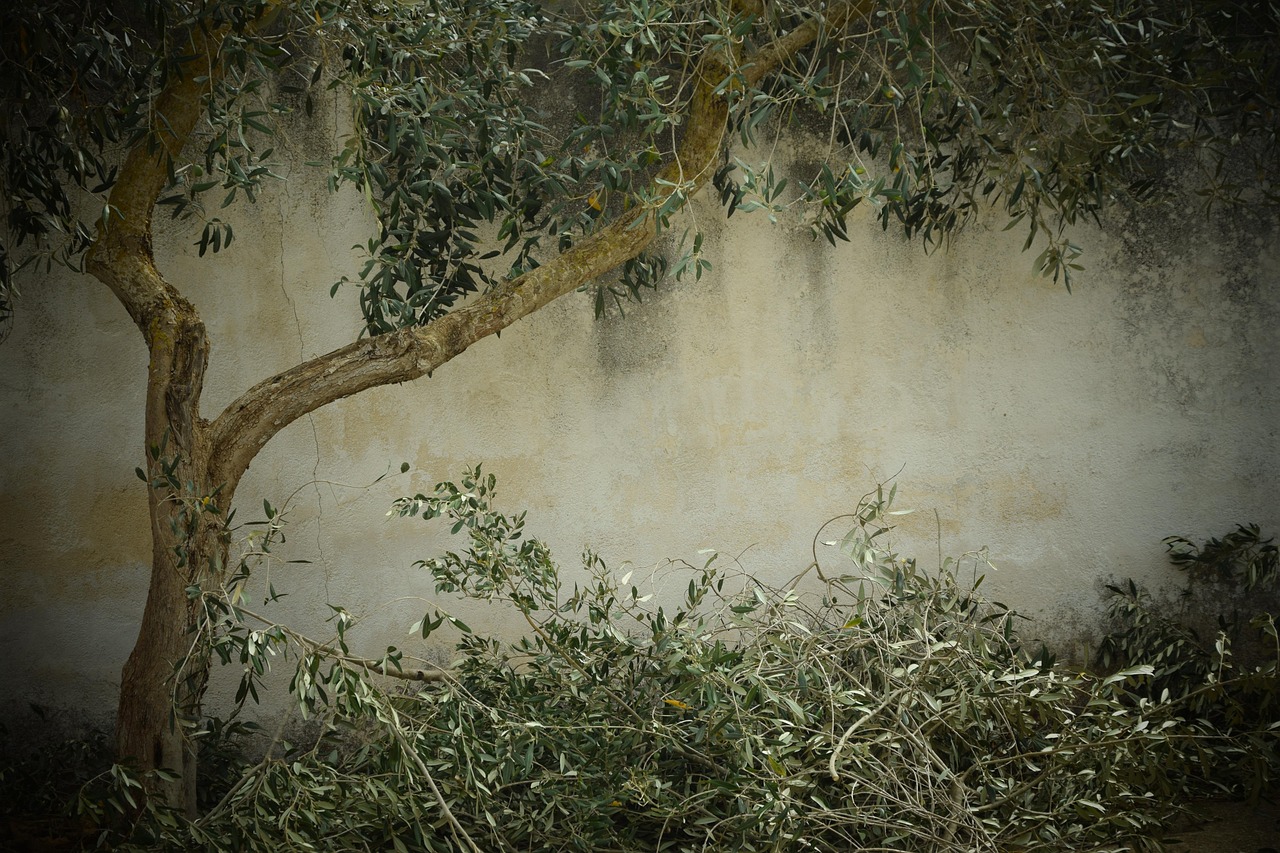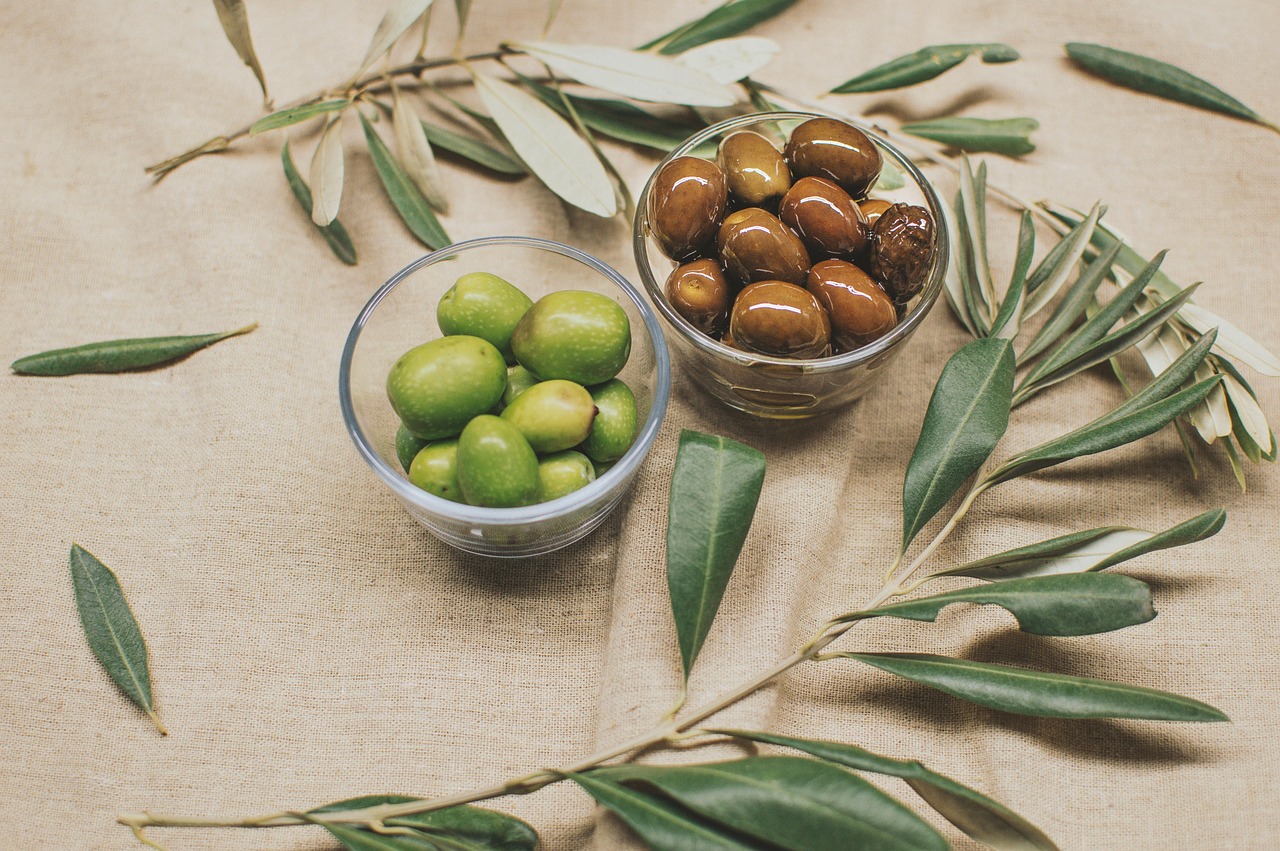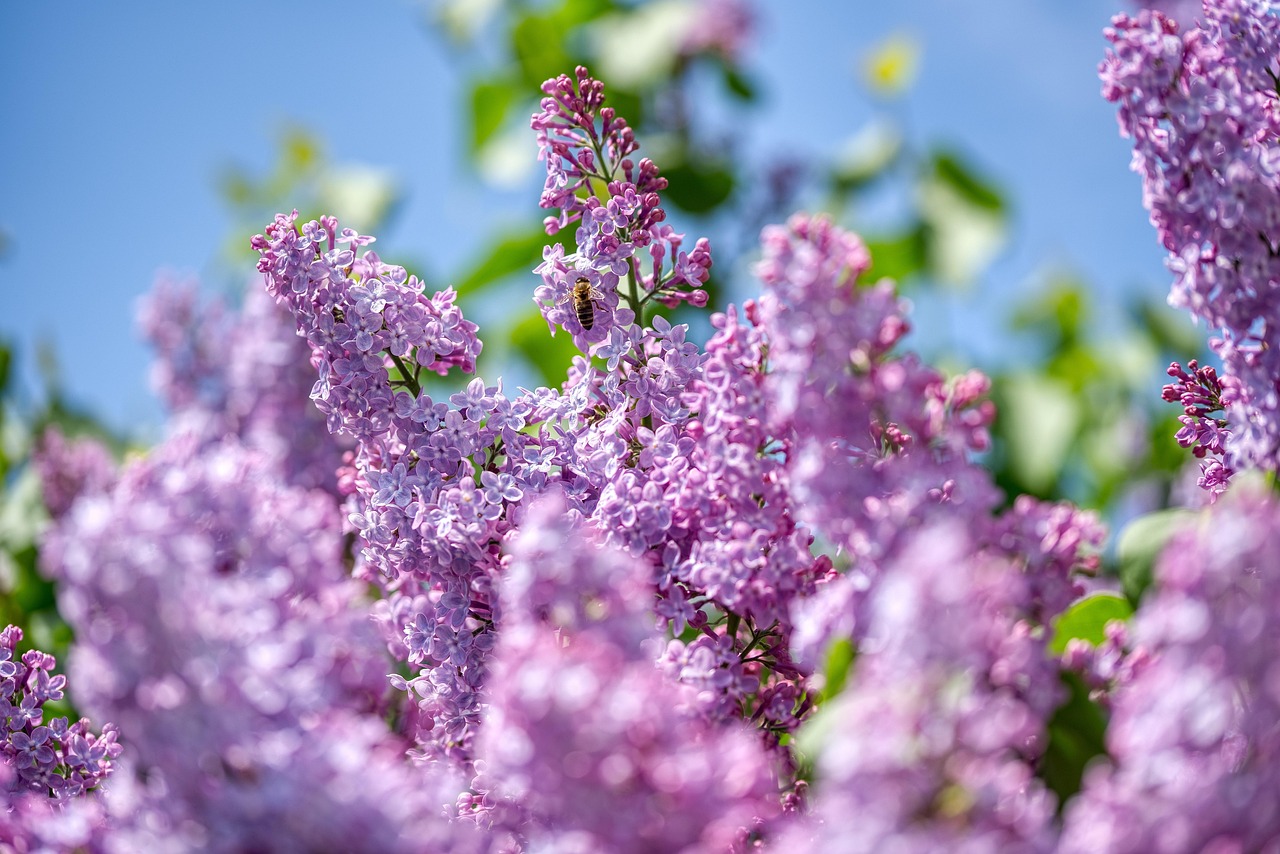Pruning olive trees is essential for enhancing air circulation, which promotes healthy growth and reduces the risk of diseases. Proper pruning techniques can open up the canopy, allowing better airflow and sunlight penetration, leading to improved fruit quality and yield.
Understanding Olive Tree Pruning
Olive trees (Olea europaea) are renowned for their resilience and adaptability. However, like all fruit-bearing trees, they require regular maintenance to thrive. Pruning is a critical aspect of olive tree care that involves the selective removal of branches and foliage. This practice not only shapes the tree but also significantly impacts its health and productivity.

The primary goal of pruning is to create a balanced structure that allows for optimal air circulation and light exposure. By removing excessive or overcrowded branches, you can help prevent moisture accumulation, which is a breeding ground for pests and diseases. Additionally, good air circulation reduces the likelihood of fungal infections, ensuring that your olive tree remains healthy throughout the growing season.
Benefits of Air Circulation in Olive Trees
Enhancing air circulation around olive trees has multiple advantages. Here are some key benefits:
- Prevention of Disease: Improved airflow helps to dry out wet foliage, decreasing the risk of diseases such as olive leaf spot and black scale.
- Better Fruit Quality: Adequate light and air exposure lead to more uniform ripening of olives, resulting in higher quality fruit.
- Stronger Growth: Trees that are well-pruned have a better chance of developing robust growth habits, leading to increased overall productivity.
- Ease of Harvesting: A well-structured tree allows for easier access during the harvesting process, saving time and labor costs.
When to Prune Olive Trees
The timing of pruning is crucial for achieving optimal results. Olive trees can be pruned at different times depending on the desired outcome. Here are some common practices:

| Pruning Time | Purpose |
|---|---|
| Late Winter to Early Spring | General shaping and maintenance before the growing season begins. |
| Summer | Light pruning to remove excess shoots and promote airflow. |
| Post-Harvest (Late Fall) | Removal of dead or damaged branches after harvesting. |
Pruning during the late winter to early spring is often recommended as it aligns with the tree’s dormant period. This timing minimizes stress on the tree and allows it to recover quickly as new growth begins. Summer pruning can help control growth and maintain air circulation without significantly affecting the tree’s overall health.
Essential Pruning Techniques
There are several techniques that can be applied when pruning olive trees to enhance air circulation:
- Thinning: Removing entire branches to reduce density within the canopy. This technique improves air movement through the tree.
- Heading Back: Cutting back branches to a shorter length to encourage new growth from lateral buds. This helps maintain a manageable size while promoting airflow.
- Cleaning: Removing dead, diseased, or damaged wood helps prevent disease spread and improves overall tree health.
Each technique serves a specific purpose. By understanding these methods, you can make informed decisions when it comes to maintaining your olive trees. Proper implementation of these techniques will lead to stronger, healthier trees capable of producing abundant fruit.

In conclusion, effective pruning is not merely about aesthetics; it is a fundamental practice that enhances air circulation within olive trees. When done correctly, it can lead to healthier trees and better yields. As you embark on your olive tree care journey, consider these essential aspects of pruning for optimal results.
Tools and Equipment for Pruning Olive Trees
Having the right tools is essential for effective olive tree pruning. The quality and type of equipment can significantly impact the outcome of your efforts. Here are some commonly used tools and their purposes:
- Hand Pruners: Ideal for small branches, hand pruners are essential for precise cuts and are useful for detailed work.
- Loppers: These are used for cutting larger branches that are too thick for hand pruners. Loppers provide extra leverage for better cutting power.
- Saws: For branches that are too large for pruners or loppers, a pruning saw or chainsaw may be necessary.
- Pole Pruners: These extendable tools allow you to reach higher branches without the need for a ladder, making them perfect for taller olive trees.
- Protective Gear: Safety goggles, gloves, and long sleeves should be worn to protect against sharp tools and falling debris.
Using the right tool not only makes the job easier but also helps ensure clean cuts. Clean cuts heal faster and reduce the risk of disease entering through wounds.

Pruning Techniques Based on Tree Age
The age of an olive tree plays a significant role in determining the appropriate pruning techniques. Different stages of growth require different approaches:
- Young Trees (1-3 years):
- Focus on establishing a strong structure by selecting a few main branches.
- Remove any competing leaders to encourage upward growth.
- Thin out crowded areas to promote air circulation.
- Mature Trees (4-10 years):
- Begin to shape the tree for easier harvesting and maintenance.
- Cut back excessive growth while maintaining a balanced canopy.
- Remove older wood to encourage new growth and prevent overcrowding.
- Older Trees (10+ years):
- Prioritize cleaning dead or diseased branches.
- Consider rejuvenation pruning, which involves more drastic cuts to stimulate new growth.
- Maintain airflow by selectively removing branches that obstruct light and air.
Understanding how to prune based on tree age ensures that you promote healthy growth while maximizing fruit production. Each stage of growth has unique requirements that need to be addressed during pruning sessions.
Common Mistakes to Avoid When Pruning
Even experienced gardeners can make mistakes when it comes to pruning olive trees. Being aware of common pitfalls can help you avoid them:
- Over-Pruning: Removing too many branches can stress the tree, leading to reduced fruit production. Always leave enough foliage for photosynthesis.
- Poor Timing: Pruning at the wrong time can disrupt the tree’s natural growth cycle. Always follow seasonal guidelines based on your region.
- Neglecting Wound Care: Failing to care for cuts can lead to disease. Consider applying a sealant if necessary, especially on larger cuts.
- Lack of Planning: Pruning without a clear plan can result in a poorly shaped tree. Take time to assess before making cuts.
Avoiding these mistakes will contribute to healthier trees and more fruitful harvests. Proper planning and execution are key components of successful olive tree maintenance.
The Role of Air Circulation in Olive Tree Health
Air circulation is not just about preventing disease; it also plays a critical role in overall tree health. Here are several ways that good airflow benefits olive trees:
- Pest Control: Increased airflow can deter pests that thrive in stagnant conditions, such as aphids and spider mites.
- Temperature Regulation: Proper air movement helps regulate temperature around the tree, reducing heat stress during hot days.
- Humidity Control: Good air circulation lowers humidity levels around foliage, which can help prevent fungal diseases.
By ensuring that your olive trees have adequate air circulation through effective pruning techniques, you create an environment conducive to healthy growth and longevity. This proactive approach not only protects the trees from diseases but also enhances their overall vigor.
Seasonal Maintenance Beyond Pruning
While pruning is a significant part of olive tree care, seasonal maintenance should not be overlooked. Here are some additional practices to consider:
- Irrigation: Ensure your trees receive adequate water, especially during dry spells. However, avoid over-watering as it can lead to root rot.
- Fertilization: Apply balanced fertilizers in early spring to support new growth and fruit development.
- Pest Management: Regularly inspect your trees for signs of pests or diseases. Treat issues promptly to prevent escalation.
A comprehensive maintenance plan that includes these practices will go a long way toward keeping your olive trees healthy and productive all year round.
Understanding Olive Tree Growth Patterns
To effectively prune olive trees, it is essential to understand their growth patterns. Olive trees have specific growth characteristics that influence how and when they should be pruned. Recognizing these patterns can help you make informed decisions that enhance air circulation and overall health.
Growth Stages of Olive Trees
Olive trees progress through several growth stages, each requiring different care strategies:
- Establishment Stage (0-2 years):
- Focus on developing a strong root system.
- Minimal pruning is needed, mainly to shape the tree and eliminate any dead or damaged branches.
- Juvenile Stage (3-5 years):
- Begin more systematic pruning to encourage a strong framework for future growth.
- Thinning the canopy helps improve air circulation and light penetration.
- Mature Stage (6 years and older):
- Pruning focuses on maintaining the shape and health of the tree.
- Regular removal of older wood encourages new growth and fruit production.
Understanding these stages allows you to tailor your pruning techniques to the specific needs of your olive trees, promoting healthier growth and better yields.
Common Olive Tree Diseases Related to Air Circulation
Adequate air circulation is vital for preventing diseases that can afflict olive trees. Familiarizing yourself with common diseases can help you recognize symptoms early and take appropriate action. Here are a few diseases often linked to poor air circulation:
- Olive Leaf Spot: Caused by the fungus Spilocaea oleagina, this disease manifests as dark spots on leaves, leading to premature leaf drop.
- Fusarium Wilt: This soil-borne fungus attacks the roots, causing wilted leaves and stunted growth. It thrives in humid conditions with poor airflow.
- Anthracnose: Another fungal disease, anthracnose appears as dark lesions on branches and fruit. It can spread rapidly in dense canopies where air circulation is limited.
By ensuring good air circulation through proper pruning techniques, you can significantly reduce the risk of these diseases taking hold in your olive trees.
Signs of Disease in Olive Trees
Recognizing the signs of disease early can make a significant difference in treatment outcomes. Look out for the following symptoms:
| Disease | Symptoms |
|---|---|
| Olive Leaf Spot | Dark spots on leaves; premature leaf drop. |
| Fusarium Wilt | Wilting leaves; stunted growth; dieback in branches. |
| Anthracnose | Dark lesions on leaves, branches, and fruit; fruit drop. |
If you observe any of these symptoms, it is crucial to take immediate action, such as improving air circulation through pruning or applying appropriate treatments.
Cultural Practices to Enhance Air Circulation
In addition to pruning, several cultural practices can improve air circulation around olive trees:
- Spacing: When planting new olive trees, ensure adequate spacing between them. This allows for better airflow and reduces competition for nutrients.
- Canopy Management: Regularly assess the canopy structure and make adjustments through pruning to maintain an open shape that promotes airflow.
- Mulching: Applying mulch around the base can help retain soil moisture while keeping the trunk area clear of debris that may restrict airflow.
Implementing these practices alongside regular pruning will create an optimal environment for your olive trees to flourish.
Importance of Soil Health for Air Circulation
The health of the soil in which olive trees are planted also affects air circulation. Well-aerated soil promotes root health and fosters better overall tree growth. Consider the following practices to maintain soil health:
- Aeration: Periodically aerate the soil to improve drainage and promote oxygen flow to the roots.
- Organic Matter Addition: Incorporate organic matter such as compost or well-rotted manure to enhance soil structure and aeration.
- Avoid Compaction: Limit traffic around the root zone to prevent soil compaction, which can restrict airflow in the soil.
Paying attention to soil health not only improves air circulation but also supports overall tree vitality and productivity. By combining good soil practices with effective pruning techniques, you will create a thriving environment for your olive trees.
Additional Considerations for Olive Tree Care
In addition to pruning and soil health, there are several other factors to consider to ensure the overall health of olive trees. These include environmental conditions, pest management, and seasonal care. Understanding these elements can enhance your ability to maintain thriving olive trees.
Environmental Conditions
Olive trees thrive in specific environmental conditions, primarily in regions with mild winters and hot, dry summers. Understanding these conditions can help you cultivate healthy trees:
- Temperature: Olive trees prefer temperatures between 60°F and 80°F. Extreme cold can damage young trees, while excessive heat can stress mature trees.
- Sunlight: Ensure that olive trees receive full sun for at least six hours a day to encourage optimal growth and fruit production.
- Humidity: Low humidity levels are ideal for olive trees. High humidity can lead to fungal diseases, making air circulation even more crucial.
By assessing and optimizing these environmental factors, you can create the best possible conditions for your olive trees to flourish.
Pest Management Strategies
Effective pest management is essential for the health of olive trees. Some common pests include the olive fruit fly, scale insects, and aphids. Implementing integrated pest management (IPM) strategies can help control these pests:
- Cultural Controls: Maintain good housekeeping in your orchard by removing fallen fruit and debris that may harbor pests.
- Biological Controls: Introduce beneficial insects such as ladybugs that feed on aphids and other pests.
- Chemical Controls: Use pesticides judiciously, focusing on organic options whenever possible. Always follow label instructions and local regulations.
Regular monitoring of your olive trees for signs of pest infestations will enable you to take timely action, protecting your trees and ensuring a healthy harvest.
Seasonal Care Practices
Different seasons require specific care practices to optimize the health of olive trees:
- Spring: This is a critical time for fertilization and pruning. Apply balanced fertilizers as new growth begins, and perform any necessary pruning to shape the tree.
- Summer: Monitor for pests, water during dry spells, and ensure that air circulation is maintained through regular maintenance.
- Fall: Post-harvest care is essential. Remove any remaining fruit, clean up debris, and consider light pruning if necessary.
- Winter: Protect younger trees from frost by wrapping trunks or using protective covers. Minimal pruning can be done during this time as well.
Adapting your care practices according to the seasons will create a more resilient olive tree and improve its overall productivity.
Final Thoughts
Olive tree pruning is a vital practice that enhances air circulation, promotes healthy growth, and ultimately leads to better fruit production. By understanding the unique growth patterns of olive trees, employing proper pruning techniques, and maintaining good soil and environmental conditions, you can create an optimal setting for your trees.
Additionally, addressing potential diseases and pests through proactive management strategies will further enhance the resilience of your olive trees. Seasonal care practices not only support tree health but also ensure higher yields in the long run.
In conclusion, investing time and effort into the proper care of olive trees will yield rich rewards. With thoughtful pruning and comprehensive maintenance practices, you can enjoy a thriving orchard that produces delicious olives for years to come. Embrace the journey of olive cultivation, knowing that each step contributes significantly to the health and productivity of your beloved trees.
